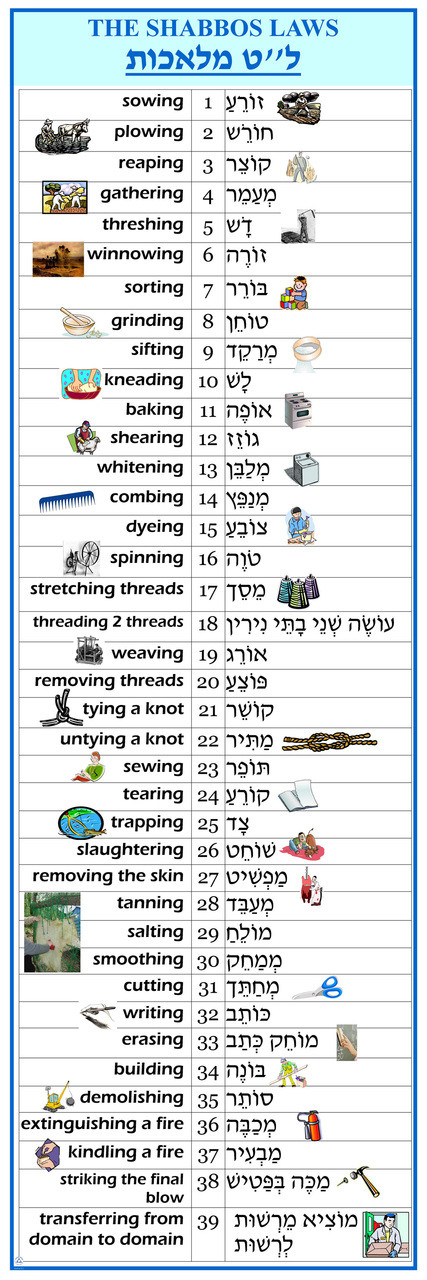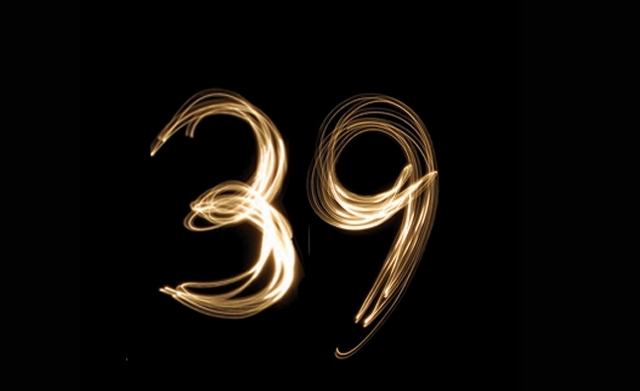Last week Torah portion, Emor, speaks about the prohibition of working on Shabbat. In fact, the Talmud enumerates precisely 39 categories of labor forbidden on Shabbat. 
Let us note that 39 is three times thirteen (3Í13 = 39). We have a principle philosophy of Chabad that when a mitzvah is prohibited on Shabbat, we are not missing it because the spiritual level of that mitzvah is already present on Shabbat. For example, when Rosh HaShanah falls on Shabbat, we don’t blow shafar – the main mitztvah of Rosh HaShanah. Yet, Chassidism explains, we are not missing anything, because the level we could ordinarily achieve only through the sounds of shafar, is already present on Shabbat. In other words, that which should have been accomplished by the blasts of the shafar, is accomplished automatically by Shabbat itself. This principle opens the door to understanding the spiritual significance of the number 39. When a holiday falls on a weekday, when opening the Torah Arc (Aron HaKodesh), we recite three times the Thirteen Attributes of Mercy – yud gimel midot harachamim. However, when a holiday falls on Shabbat, we skip that prayer. Why? Because this level of holiness is intrinsic in Shabbat and whatever we could have accomplished by reciting three times thirteen attributes of mercy (3×13 = 39) is accomplished by Shabbat itself. So we see that the number 39 is hardwired in the kedushah (holiness) of Shabbat.
Moreover, homiletically, these two numbers, 3 and 13, represent 39 in a different way. We note that the sum of all consecutive prime numbers between 3 and 13 equals 39. Indeed, 3+5+7+11+13=39. This is significant, because prime numbers, which by definition have no other divisors besides the number itself and 1, are fundamental to mathematics. These five consecutive prime numbers are fundamental to Shabbat as well:
3 – the number 3 represents three levels of holiness (kedusha) on Shabbat. Unlike holidays, which level of holiness stays constant throughout the day, the holiness of Shabbat raises as the day progress through three distinct levels. This is reflected in the fact that all three main prayers of Shabbat (tefilot) are different (whereas on yom tov all tefilot are the same). From another perspective, the number 3 represents the three-dimensional space in which we leave. three-dimensional space means that in order to specify a position of any point in space we need three numbers (x, y, z). To do that, we first need to select the center of our coordinate system – point zero – and then draw three lines (X, Y, Z axes) through this point thereby creating coordinate systems. That means that we actually need four numbers – point zero and three coordinates relative to this point. 
5 – represents Five Books of Moses (the Pentateuch), the Torah. The Talmud states that a person who scrupulously observes the laws of Shabbat is as if he fulfilled all mitzvoth (commandments) of the Torah. And conversely, a Jew who publicly desecrates Shabbat is deemed to have a legal status of a non-Jew because it is as he denies all of the Torah.
7 – this number needs no explanation as the seventh day of the week is Shabbat. Number 7 also represents the last sefirah – the seventh midah – Malchut, which corresponds to Shabbat.
11 – corresponds to the eleven herbs in the sacred mixture of incenses (ketoret) burnt during biblical times in the Temple. Ten of these incenses are sweet and the eleventh is a bitter-smelling herb. This represents the inclusion of that which is not good into that which is good. Shabbat also gathers all good and not-so-good that happened during the week and elevates it. In the first chapter of Bereshit, we read about Ten Divine Sayings by which the world was created. Actually, there were eleven sayings. After the first Ten Sayings, G‑d said that it was good. The eleventh saying is, “And it is not good for a man to be alone.” (Gen. 2:11) Shabbat is an auspicious time for the marital union because this is the time of the supernal union of Kudshey Brich Hu (the Holy One, representing in Kabbalah the male aspect of the Divine) and Shchintei (Divine presence representing the feminine aspect of the Divine), in the language of Zohar.
13 – as we said before, the number 13 represents Thirteen Attributes of Mercy – (Yud-Gimel Midat HaRachamim). In Kabbalah, Shabbat is called a 13-petal rose, which means that Thirteen Attributes of Mercy shine on us every Shabbat.
Another way to represent the number 39 is 31 + 32 + 33 = 39. Shabbat celebrates the creation of the world. The spiritual DNA of our world is made up of ten sefirot (Divine emanations). These ten sefirot are arranged into three triads of sefirot (Chochmah-Binah-Daat, Chesed-Gevurah-Tiferet, Netzach-Hod-Yisod) plus Malchut. At the most quintessential level, each of these triads is made of three principles – thesis, antithesis, and synthesis. This is why the number three is so fundamental to creation and to Shabbat which celebrates it.

Is it possible that they actually counted but didn’t realize that the correct number was 63 and not 39?! Could they have been that far off? Did they only count some of them? If so, which ones and why?
Wow thank you, this is profound and will help take my Shabbat to a new level. Todah!